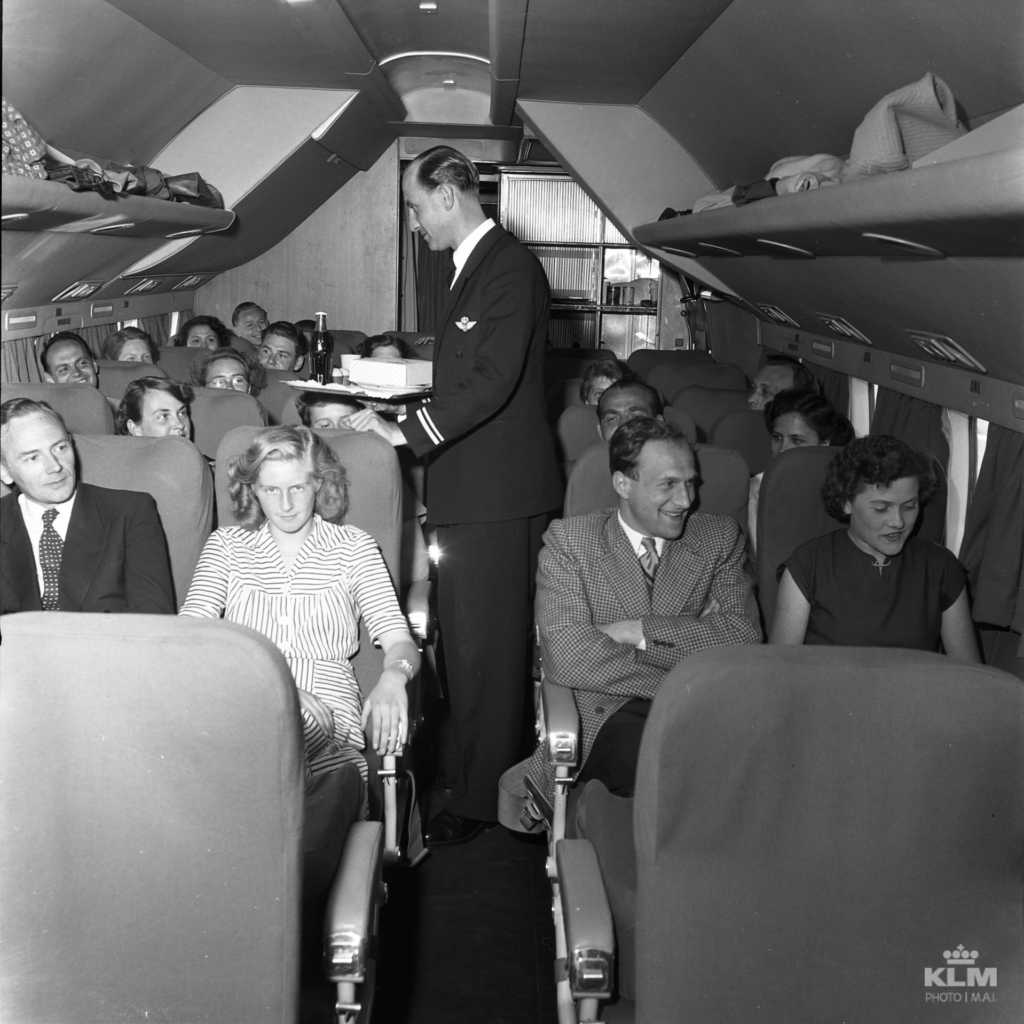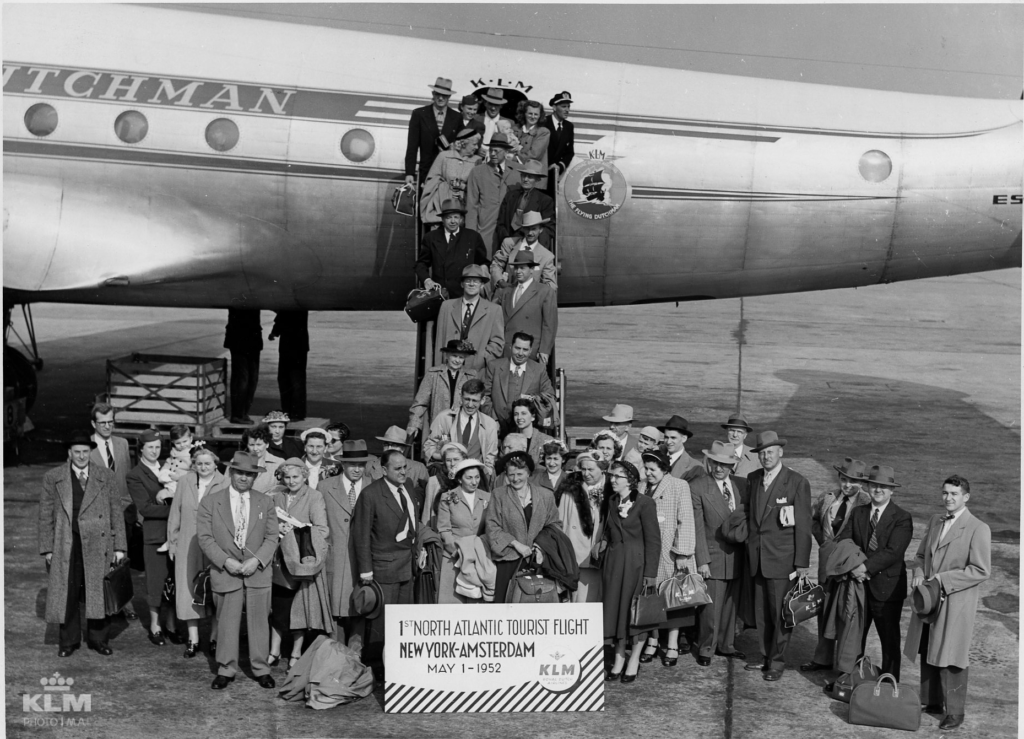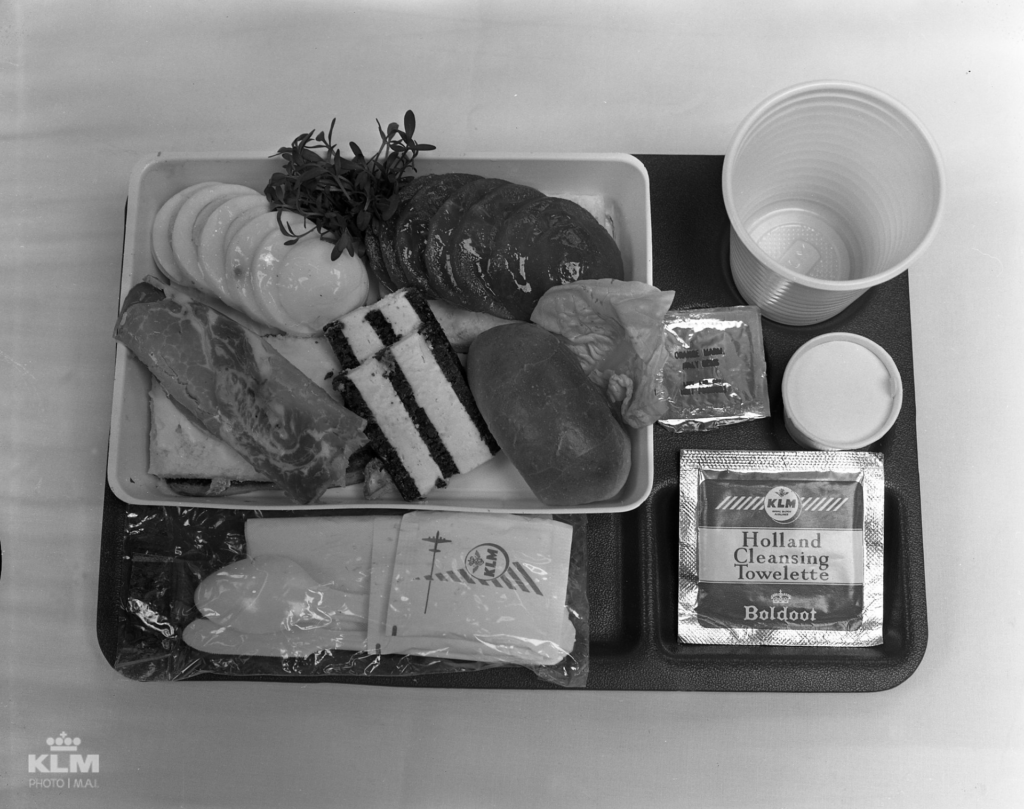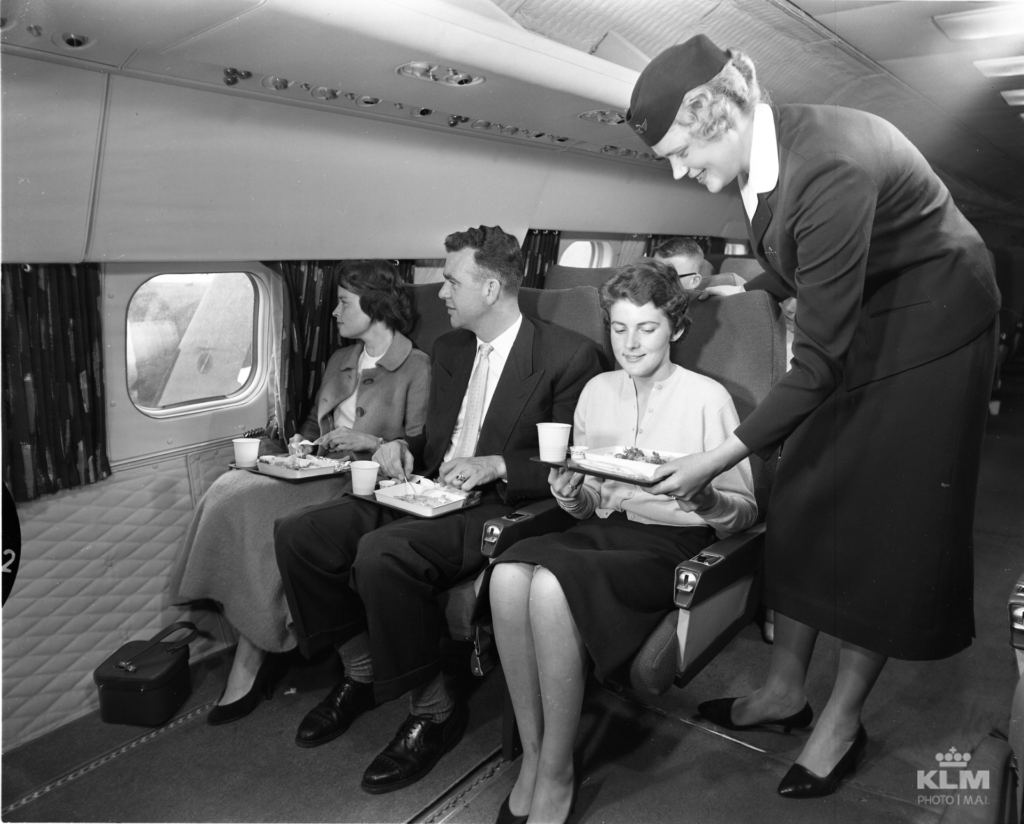The Origin of Economy Class
In the early days of air travel, there were no class distinctions – a seat was a seat. But that changed in 1952, when KLM introduced Tourist Class, and again in 1958, when we introduced the class most of you are probably familiar with: Economy Class. What kind of product did we offer at the time? And why was this class introduced?

The predecessor: Tourist Class
The post-war years were marked by reconstruction. By the early 1950s, this was well underway and there was a growing demand for mobility. Flying was still expensive, but aircraft were also getting bigger, which is why various IATA-affiliated airlines decided to make flying accessible to more people. They introduced a new, simpler class of service, with tickets costing up to 30% less than existing airfares. This Tourist Class service was first offered on the North-Atlantic route.
Tea, coffee, chewing gum and sweets were free of charge, but passengers had to pay for their own meals before the flight and during intermediate landings. Breakfast and lunch boxes were, however, available on board, at a fee. Contents varied from stuffed eggs and tomatoes to ham and asparagus, or cold meats, an Italian salad, bread and fruit. Strong liquor wasn’t served. Baggage was free of charge up to 20 kilos, instead of 30.
Tourist Class was a huge success, causing demand to soar to new heights. In 1951, 340,000 passengers made the North-Atlantic crossing. By 1954, this number had leapt to 580,000, and three years later it was up to million, 770,000 of whom flew Tourist Class. KLM benefitted from the new class, which was highly popular among passengers, with ticket sales increasing no less than 67% in the first year. It was therefore hardly surprising that Tourist Class was also offered on other routes.

One step further
Economy Class originated for much the same reason as Tourist Class: to attract new groups of passengers with lower airfares. This time round, introduction of the new class coincided with the introduction of jetliners that offered increased capacity because they flew faster, allowing more flights to be operated. The introduction of this class was once again initiated and closely monitored by IATA. But this caused some friction.
Economy Class was referred to as a “promising problem child” in a KLM staff bulletin on 27 March 1958. “Promising” because the industry anticipated a flood of new passengers; and “problem child” because the new class had to meet all sorts of standards and regulations that applied worldwide. All this made it more difficult for airlines to compete. KLM’s main dilemma was: how do we keep the quality of our service up to standard and meet IATA’s requirements?

What is a “simple sandwich”?
It was all a question of exploring the limits of what was allowed, trying to gain an advantage by exploiting vaguely stipulated requirements. KLM opted for a type of seat that offered maximum comfort, but occupied minimum space, giving the passenger as much legroom as possible. IATA stipulated that catering should be simple and inexpensive, but this offered plenty of room for interpretation, which saw KLM’s cooks creating “highly tasty sandwich meals that are pleasing to the eyes and tongues of our passengers.”
The sale of goods was prohibited in Economy Class. This included newspapers and magazines, as well as cigarettes and liquor. Coffee, tea, milk and mineral water were free of charge. And then there was the problem of space. There were no wardrobes on board, which means coats and hats had to be placed in the baggage racks. “Stuffed into baggage racks” would be more accurate. That meant hand baggage had to be restricted to a minimum. The maximum dimensions allowed were 50 x 30 x 15 cm.

Personal attention
KLM had to deal with two key issues in 1958. Firstly, it had to offer passengers clear information on what was and wasn’t possible, thereby preventing disappointments before, during and after the flight. Secondly, personal attention became important, because there was little room for an airline to distinguish itself when faced with global product standards, which applied even though passengers paid around 1,000 guilders for a one-way ticket across the Atlantic (the equivalent of around 3,000 euros today).
According to an article in the staff magazine Wolkenridder, it was therefore important to promote brand preference among passenger: “Every interaction between our airline and a passenger or future passenger must be as pleasant as possible. […] Passengers who are treated courteously and offered personal warmth will ultimately conclude that they have experienced a pleasant flight with a solidly reliable airline. That ultimate conclusion is essential for the future of KLM. And hence for your own future.”
After 1 April 1958, the number of passengers in both travel classes, for all participating airlines, rose by 27% in three months, totalling 265,000. Three-quarters of them travelled Economy Class, which was subsequently expanded. The efforts to make air travel accessible to a broader public had proved to be a great success.
Curious what was on the menu if you flew KLM in 1965? Take a look.






